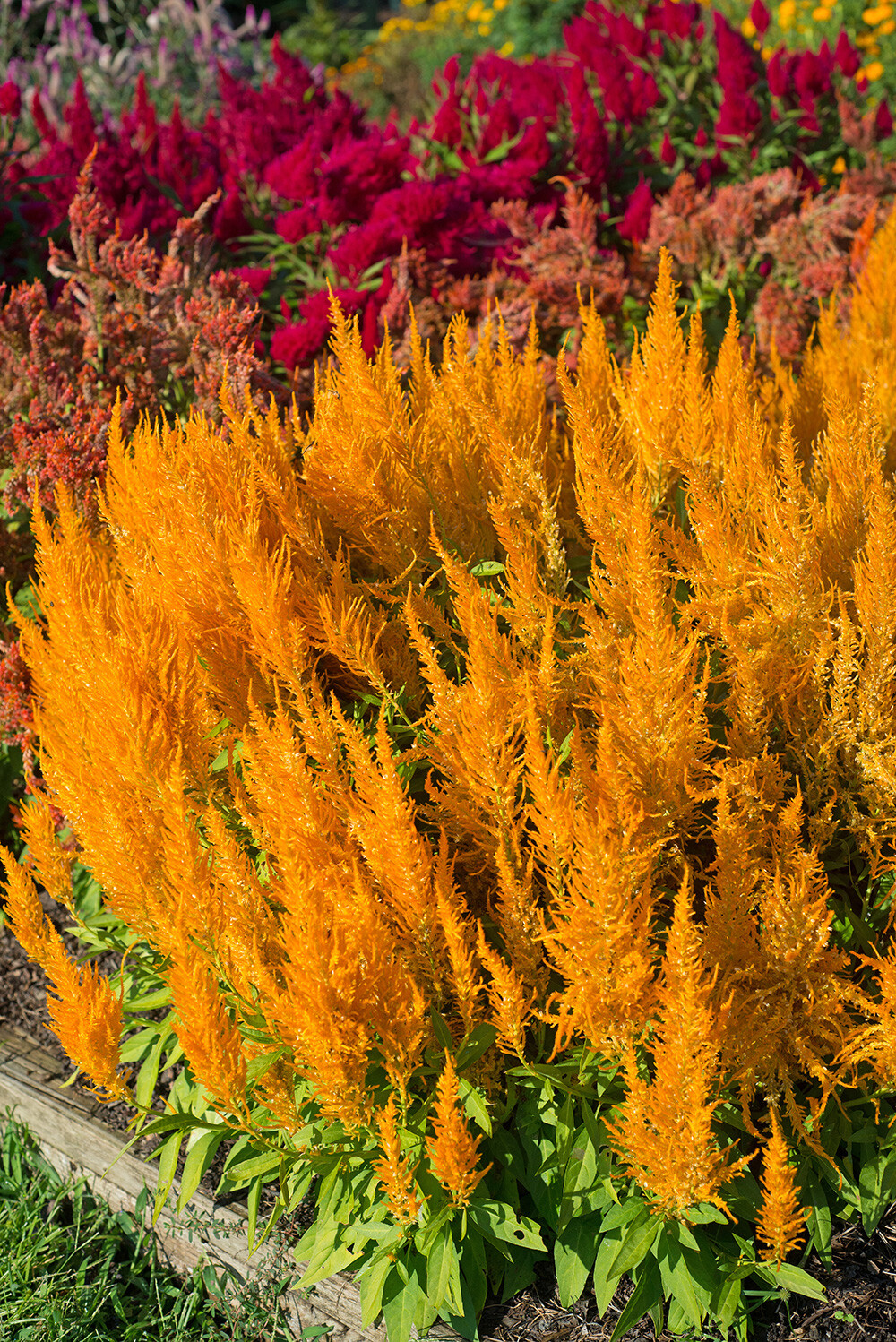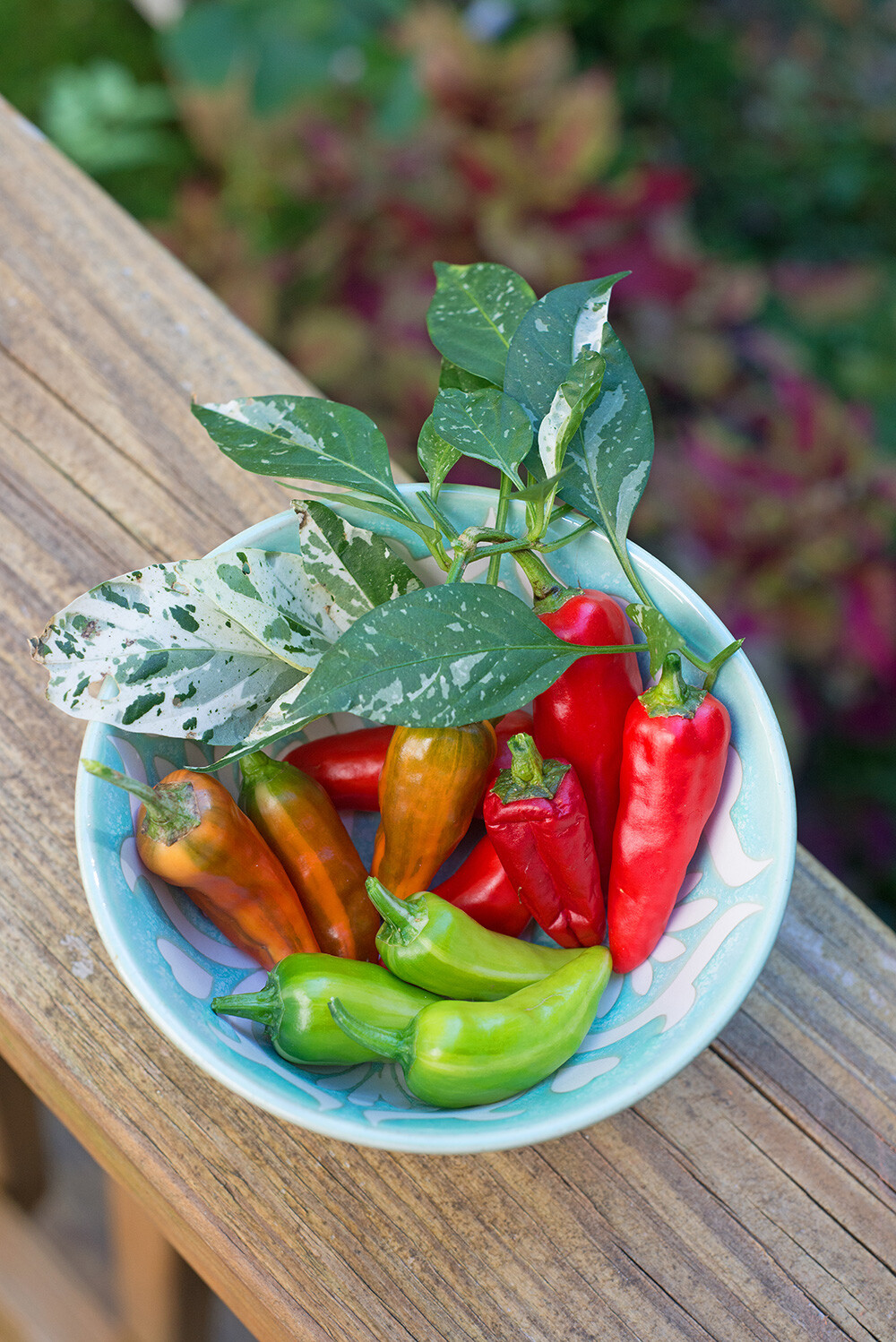With spring getting into full swing, decisions are being made on annuals to add to ornamental and vegetable gardens. While your choices are obviously many, let me toss one interesting possibility your way: the fish pepper. Not only does it have a mind of its own when it comes to good looks (I’ll explain in a second), but it is a very tasty pepper, and, as an extra kicker, has an appealing provenance.
Intrigued yet?
The fish pepper is an old pepper with deep roots in the New World. When Columbus wandered across The Big Pond to the Caribbean, it was already a common goody in area cuisines. In the late 1800s, the fish pepper found another home in the Mid-Atlantic region, where it was a favorite addition to many dishes in African American oyster bars and crab houses, hence the name “fish pepper.”
By the 1940s, strangely, the fish pepper’s popularity in the home garden sputtered, and it became diffcult to find seeds and plants. But its history, looks, and taste were too tantalizing to keep this pepper down long. Today, its seeds can be easily bought online (burpee.com and seedsavers.org are two good esources), and personally, it hasn’t been hard for me to buy plants locally, with the Farmers Market in Raleigh and Big Bloomers in Sanford being my latest sources.
As for appearance, my best description would be “pleasantly quirky.” The foliage of fish pepper starts out green, but as the plant matures, it takes on variegated patterns reminiscent of an explosion in a white paint factory. is occurs on some leaves, but others remain solid green. See? Quirky.
The 2- to 3-inch-long peppers also keep gardeners guessing as to what color they are going to be. Most begin light green, but others start as o -white fruits. On their way to mature red, some — not all — of the peppers play in the striped-green-and-white-turning-orange-and-brown twilight zone of the spectrum.
Young fish peppers have a sweet flavor similar to bell peppers but with a tingle. As the fruits mature, this tingle ramps up to a moderate heat closely compared to serrano and cayenne peppers, to which fish peppers are probably related.
Planted in a sunny, well-worked site amended with compost or commercial soil conditioner and a dose of low-nitrogen fertilizer, the ornamental, edible, historical fish pepper can certainly be a triple-treat addition to your garden this spring!

Fancy celosias such as ‘Flamma Golden’ can be easily dried.
This spring, why not plant forever? In this case, “forever” refers to so-called forever flowers, which are also tagged as “everlastings.” These are ornamentals that are easily dried and hold up quite well in indoor arrangements. Such persistent pretties include strawflower, statice, liatris, globe thistle, yarrow, gomphrena, and celosia. The best way to dry them is to hang small batches upside down in a warm, dark, dry location such as an attic or unlit garage until they feel crispy to the touch, which for most everlastings should be in less than a month.
To Do in the Garden
April
- Besides adding fish peppers to the spring/summer veggie garden, if your green thumb is itching to get growing with warm-season edibles, the middle of this month is a good time to begin planting snap beans, beets, Swiss chard, cucumbers, dill, eggplant, watermelons, squash, and tomatoes.
- Planting warm-season vegetables in April certainly doesn’t mean growing early spring veggies has come to a screeching halt. No, there actually is still time at the beginning of this month to start another round of spinach, mustard greens, radishes, lettuce, kale, collards, leeks, cauliflower, and broccoli.
- Don’t apply high-nitrogen fertilizer to plants such as pyracantha, apple, quince, blackberry, or cotoneaster because it could encourage rapid new growth that makes the young limbs more susceptible to fire blight.
- Regular rains are naturally beneficial to a garden, but how do you know when Mother Nature provides too little, or even too much? Invest in a simple rain gauge and an easy-to-use soil moisture meter to help fi ne-tune your garden’s irrigation needs.
- 2023 Maggy Awards: Shopping
- 2023 Maggy Awards: Services
- Cary Magazine Presents the 2023 Maggy Awards
- 2023 Maggy Awards: Lifestyle
- 2023 Maggy Awards: Restaurants
- Things to Do: April 2023
- Small Business Spotlight: Good Day Cary
- Erica Chats: Erica’s Maggy-Winning Picks
- Nonprofit Spotlight: Triangle Aphasia Project Unlimited
- Chasing Her Dreams
- On Trend: Vintage Jewelry
- Restaurant Spotlight: M Sushi at Fenton
- Liquid Assets: Peaceful Oasis
- Liquid Assets: Fresh Start
- Garden Adventurer: A Fish Tale







